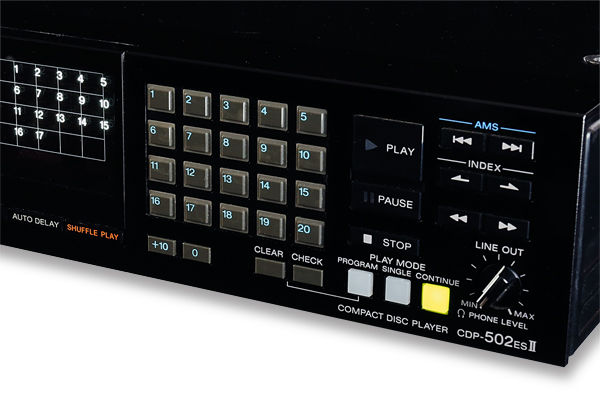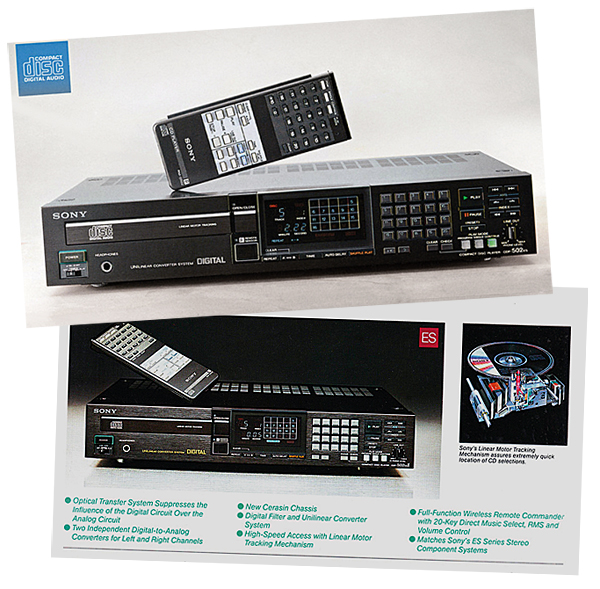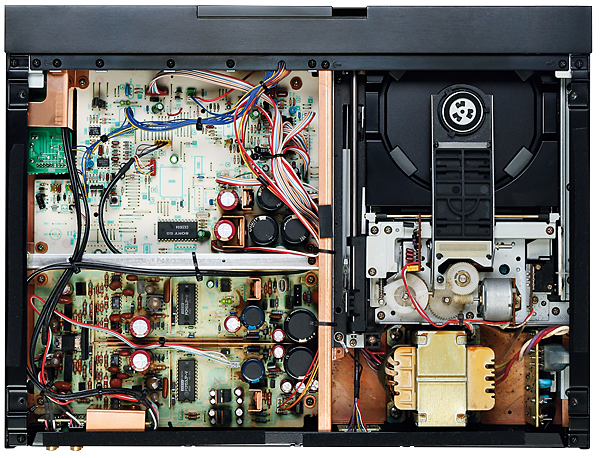Sony CDP-502ESII CD player Page 2
The high-speed track access system may have lost some of its capability to amaze over the years but it still remains technically impressive, especially if you are used to the leisurely gaps between pieces normally associated with 1980s players. It takes something of the calibre of the Technics SL-P1200 [HFN Aug '13] to beat it, which is high praise indeed.

I remain to be convinced about the usefulness of Shuffle Play though. I've never used it in any player I've owned and I don't know anyone else who does. However, I did find the Auto Delay function of benefit. This inserts a short gap between tracks which masks the sometimes unnaturally short intervals between selections that can occur when you program in your own sequence. It also makes it much easier for the music search systems in tape decks to work if you transcribe a CD (to which you own the copyright, of course) onto a cassette.
The variable output presents the option for direct connection to a power amplifier in a truly minimalist CD system in which you'd even get the luxury of remote control for the volume – no preamplifier required.
![]() Tim Listens
Tim Listens
I found the CDP-502ESII to be a great improvement over any previous Sony CD player. Its strength is the way it is able to lock solo vocals at the centre of the soundstage and do so in a way that is full of vigour and verve. This is something the CDP-101, etc, could never really achieve. Tonally it tends towards dryness, especially when compared to a Philips/Marantz player of the same era. This leads to an enhanced sense of speed and drive, and while this means it isn't an especially relaxing player to listen to, when the music requires energy the CDP-502ESII really shines.

Belinda Carlisle's 'Lay Down Your Arms' from the album Real [Offside CDV 2725] enjoyed an extra degree of bite and edge that was clear to hear, the super quick delivery of the Sony CDP-502ESII never seeming to impede the natural flow of the recording. The integrity of the soundstage was also well up to standard on this track. The best balance is typically achieved when the player is used in a rich-sounding or slightly bass-heavy system, or where you can experiment with speaker positioning to boost the bottom end.
Calmer musical styles also revealed the CDP-502ESII to be a machine of real quality, Suzanne Vega's Solitude Standing [A&M CD395136-2] proving a real pleasure to listen to throughout. Being critical, I did notice notice some fuzzyness around lines in the unaccompanied vocal of 'Tom's Diner'. 'Ironbound' demonstrated a similar effect, although the instrumentation, the percussion in particular, was beautifully rendered – explicit without being over bright.
All Clear
In isolation one could convince oneself that the CDP-502ESII was the equal of any player, but compared with some period rivals the sound could be described as a little bland and two-dimensional. Even though the soundstage it projects is both solid and uniform over the area it covers, I couldn't escape the sense that it was firmly bounded by the loudspeakers and could not be coaxed to extend beyond them.
This even applied to tracks seemingly mixed with the studio console's 'stereo wide' button pushed-in, as these also remained constricted. 'Woman In Chains' by Tears For Fears lacked its usual spacious ambience, both left to right and front to back. As if to compensate for this, the outstanding clarity of Oleta Adams' vocals, helped no doubt by a subtle presence lift, was something that I couldn't fail to admire.
This was clearly a well-designed and deliberately 'voiced' machine, but careful system matching is required to hear it at its best. Comparisons with the Technics SL-P1200 are unavoidable given the technical similarities of the two as both use 2x oversampling digital filters, dual Burr-Brown DACs (PCM53s in the Sony, PCM54s in the Technics) and linear motor-driven optical blocks. They sound remarkably similar too, but the '1200 has the edge in terms of dimensionality, as well as vocal smoothness and detail. These are academic arguments though, and I would be happy with either.

Buying Secondhand
If buying a CDP-502ES today – of either iteration – the main concern is the health of the laser, which is reasonably durable but difficult to obtain as a replacement part. As with the Philips players of this era, the optical unit came as a part of the complete transport assembly (type BU-1C). But unlike Philips this was only used in a small number of different models. Before condemning it though, it is wise to check that the transport lock underneath isn't engaged, since this gives similar symptoms to a failed laser. Elsewhere in the mechanism, the beautifully engineered drawer mechanism can seize up with age but careful re-lubrication of this normally provides a cure.
As for the electronics, the Japanese habit of securing some of the components and wiring with adhesive can generate random and confusing faults when the material used ages and becomes conductive and/or corrosive. Removing all traces of this adhesive should be the first course of action when dealing with a defective machine.
Finally, the design of the player's cabinet allows for generous ventilation around the DAC and analogue circuits but the slots are rather large. The upshot is that these particular Sony models seem unusually prone to collecting dust, cat hair, tinsel, hair grips, jewellery fragments and various other small objects which play havoc with sensitive electronic circuits. Needless to say, it is vital to keep this area of the machine clean and free from contamination.
Hi-Fi News Verdict
Desirable for many reasons, the CDP-502ESII was a step-ahead machine in many ways for Sony. Worth seeking out in preference to the original version, it is a superbly finished design that represents a point when Sony's CD players really came of age. By reputation it is durable too, so could be enjoyed in regular use. Just remember to match it with a system that's not shy on bass in order to hear it truly shine.























































